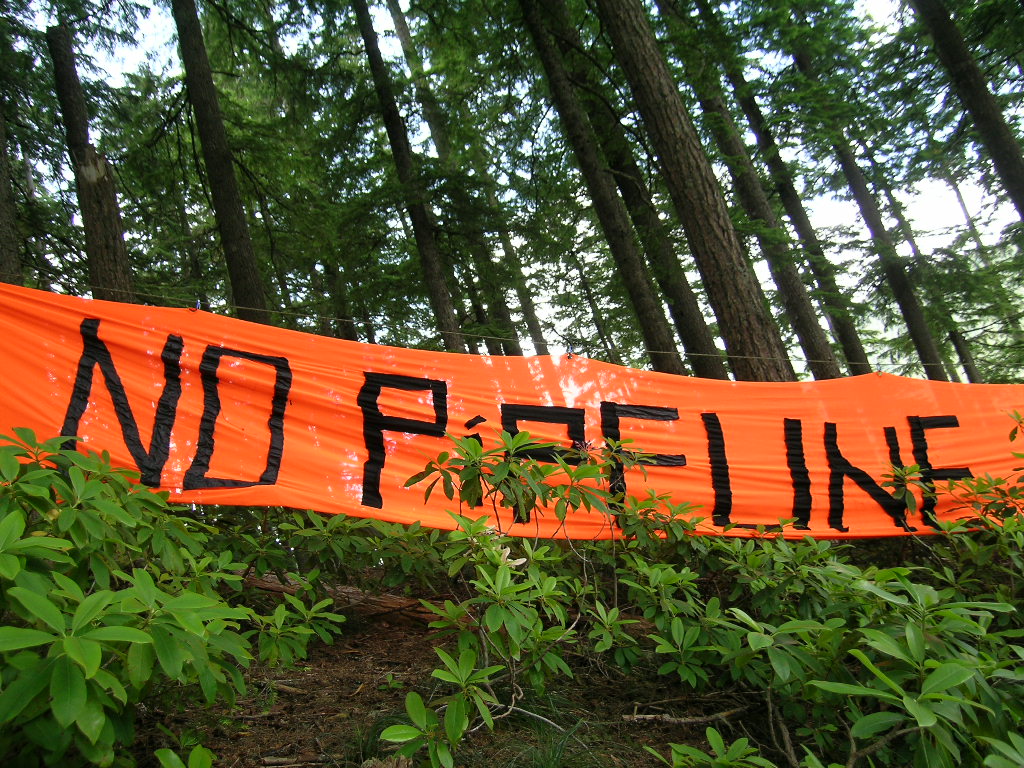Proof that Barking Works—No Pipelines in Mt. Hood!

Brenna Bell here, Bark’s former Policy Coordinator & Staff Attorney. I’m making a guest appearance to share some long-awaited good news: the energy corridor plotted across the southern flank of Mt. Hood and known by names such as the Palomar Pipeline, Corridor 230-248, and Trail West is finally off the table after 17 years of advocacy!
This type of long-form advocacy can only happen with your support.
When I started as Bark’s NEPA Coordinator and Staff Attorney in 2011, I inherited the struggle against this energy corridor from then Conservation Director, Amy Harwood, who had already been fighting it for years. Back in 2005, the Bush Administration directed the Bureau of Land Management to identify priority routes for fossil fuel, hydrogen, and electricity transmission across the Western U.S. These routes are known as “West-Wide Energy Corridors” (WWEC). West-Wide Energy Corridors were considered the preferred locations for energy transport projects on lands managed by the BLM or US Forest Service and intended to facilitate long-distance transport of oil, gas, or hydrogen via pipelines as well as transmission of high-voltage electricity. Once designated in the WWEC, development of the corridor would be fast tracked by the federal government.
Creation of the WWEC coincided with NW Natural & TransCanada proposing to build the Palomar Pipeline to connect the gas main in Madras with a proposed LNG export terminal on the Columbia River and included approximately 40 miles of pipeline through Mt. Hood National Forest. Even though it met few of the criteria for a “preferred location” for energy transport, the line proposed by the Palomar Project was included in the WWEC final map and labeled Corridor 230-248.
In 2009, Bark joined several other conservation groups in a lawsuit challenging the WWEC Environmental Impact Statement (WWEC EIS) and associated energy corridor designations, with a particular concern about 230-248, given that it would clear cut through spotted owl critical habitat, the Pacific Crest Trail, Clackamas Wild and Scenic River, and Late Successional Reserves. In 2012, the BLM, Forest Service, Department of Energy, Department of Justice, and Plaintiffs reached a Settlement Agreement regarding the WWEC EIS. As part of that agreement, several corridors, including Corridor 230-248, were designated as “Corridors of Concern.” The federal government agreed to review the WWEC within ten years and determine if any changes should be made to these corridors.
During the ensuing decade, proposals to develop the corridor kept popping up, most recently in NW Natural’s documents as the “Trail West Pipeline.” Thus, when the BLM finally convened the review of the WWEC, Bark was determined to get 230-248 removed from the map permanently.
For the last several years, I participated in every possible forum for public input – and created a few new opportunities – with the same message: “delete Corridor 230-248 from the revised WWEC map“. I reminded them that corridor 230-248 was not located in a favorable landscape and since it was identified as a corridor of concern, new conflicts have arisen with the line including the first established wolf pack on Mt. Hood in 70 years. I also let them know a large portion of the route was burned by the stand-replacing Riverside Fire, making an energy corridor across the Clackamas River & Fish Creek an even worse idea.
This spring, the BLM released the “Section 368 Energy Corridor Review Final Report” with recommendations to change several of the corridors initially included in the WWEC. I was beyond pleased to see the following regarding Corridor 230-248: “Recommendation: Consider deleting corridor. The corridor does not align with existing infrastructure and river crossing, fire risk, terrain, and stability concerns make future energy development along this corridor unlikely. Other concerns include proximity to wilderness and ACECs, Pacific Crest NST crossings, WSR crossings, Northern Spotted Owl habitat, and habitat for the new White River wolf pack.” After all this time, they actually listened!
Donate to Bark today.
So friends, after the 17 years that Bark has been speaking out against building a 40-mile clear-cut energy corridor across Mt. Hood National Forest, it is highly likely that it will no longer be designated as a West-Wide Energy Corridor, which also means it is highly likely to never be developed.
Thanks for all your support and engagement in this struggle! Viva Clackamas!
Brenna Bell, former Bark Policy Coordinator & Staff Attorney
P.S. There is still room to sign up for this week’s Forest Advocacy Campout in Mt. Hood Wetlands. Get some mud on those boots in support of beaver habitat restoration!
